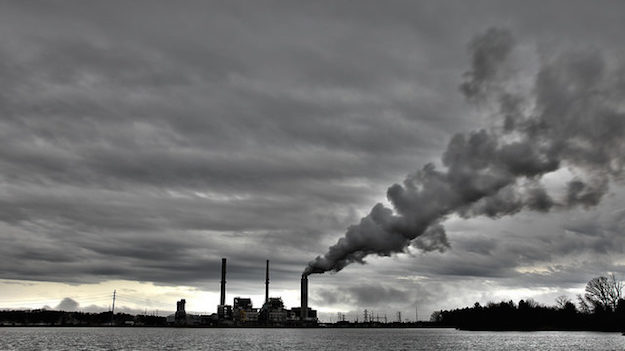Natural gas beats coal in NC electricity mix for first time ever

Photo: Will Thomas/creative commons
Figures just released by the federal government suggest that natural gas beat out coal in April as the primary fuel source for electricity for the first time ever in the United States. And that’s not just happening on a national scale. Charlotte Business Journal reports that this trend also holds true for the North Carolina energy mix:
In April, North Carolina produced 2,629 megawatt-hours of electricity from natural gas, or 32.1% of all the megawatt-hours generated in the state that month. Coal-fired power accounted for 1,769 megawatt-hours of electricity, or 21.6 percent of the power produced in the state. That represents a dramatic turnaround. In 2014, coal accounted for 31.6% of the power produced in North Carolina, or 2.6 gigawatt-hours. Natural gas, accounted for 26.7 percent of the power produced, or 2.2 gigawatt-hours.
Of course, there are several things going on here. Duke has closed several coal-fired power plants in recent years, and the depressed cost of fuels—especially natural gas—has lead to Duke dispatching more electricity from its natural gas-fired plants. North Carolina’s rapid boom in solar energy may also be depressing demand for fossil fuel sources in general somewhat, although renewables still remain a fraction of the overall energy mix. There are strong signs that renewables will continue to grow as part of Duke’s energy mix, however, especially if legislators heed business leaders’ calls to keep renewable energy targets intact.
But what does the pivot to natural gas mean for emissions, and in particular greenhouse gas mitigation efforts?
Much of the science has indicated that burning natural gas produces considerably fewer greenhouse gas emissions per unit of energy produced, perhaps as much as 47% fewer emissions when compared to coal. However, at least one recent study commissioned by the Environmental Defence Fund has suggested that methane leaks (methane is an incredibly potent greenhouse gas) during the extraction and transportation process, as well as emissions from flaring, may wipe out any climate benefits of switching to natural gas from coal. That may be why a group of oil and natural gas investors worth $1.5 trillion are now vocally supporting the Obama administrations efforts to create robust federal standards for reducing methane leakage.
Ultimately, given that an increasing number of businesses and world leaders are committing to complete decarbonization and a phase-out of fossil fuels, a switch to natural gas may prove to be temporary. One recent study has mapped out what researchers say is a cost-effective path to 100% renewable energy for North Carolina, using primarily offshore wind and solar energy. Assuming this vision of an emission-free energy grid does keep progressing, however, there may still be a role to play for natural gas as a bridge fuel—but to do so the industry will need to manage its production in a sustainable and safe fashion, and also ensure that it keeps replacing coal, not renewables.
- Categories:


